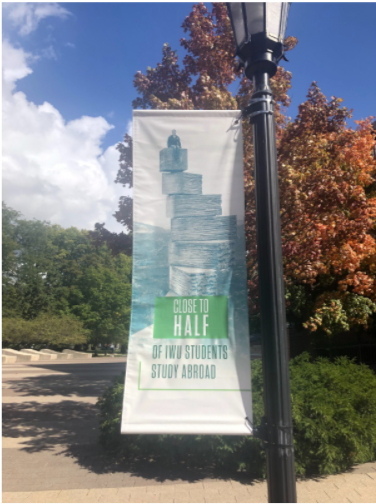
Photo: Emma Cottrell
When I was doing my college search, a big thing I was looking for was the option to study abroad. As a low income student, I was told that “study abroad is more affordable than you’d think.” A sentence I have heard over and over again.
Yet, when I looked into it and saw the estimated costs, I was very disappointed.
For one such program over May term, the costs would be roughly $5000. And there is no guaranteed financial aid, only a competitive scholarship that would not cover all the costs, which is not exactly the affordable cost that I was assured.
Low income means for many, including me, not being able to save up $5000 for something like study abroad. Instead, having to use that money for rent or other necessities. Studying abroad is not a necessity, but a recommended “want.” If it is so highly recommended by schools, it should be available at a reduced price or totally free for low income students.
To be considered a low income student by the U.S government, your family’s overall yearly income must be around or below $40,000 a year. The amount of low income students is increasing, meaning less people are realistically able to afford the cost of study abroad.
There is an obvious want from universities and colleges for students to study abroad, and it is a want for many students as well. However, with that want to study abroad comes the need for payment for such an experience.
$5000 is 12.5 percent of $40,000, 25 percent of $20,000, these are both hefty percentages of the example low yearly incomes. Although studying abroad can be covered by student loans, no one wants to have to tack on an additional $5000 or more onto their student loans.
Another preaching with prices of study abroad is “oh there are lots of scholarships available to you.” That is true, but no scholarship is guaranteed, and even if you do get a few, it is never enough to cover all the costs.
The only way, for me personally, to afford a $5000 study abroad experience would be if 90 to 100 percent of the costs were covered for me.
Another suggestion is to use your work-study. Sure, the $2400 would cover a little less than half the costs, but it is just not feasible. That $2400 is used instead for tuition, groceries and “fun” purchases like merchandise from the bookstore.
The costs of studying abroad increase even more if the program is through an affiliate company, instead of directly through the school.
An eight week summer program costing about $8800 has available scholarships, yet they only cover $500 to $1500 of the approximate price. That price does not include “extras,” like day trips to other countries, entertainment or souvenirs. The school obviously should not have to pay for things like souvenirs, however assistance should be provided for external experiences that have educational value.
No student should have to take on extra student loans or put themselves or their families into debt to study abroad.
“No student should have to take on extra student loans or put themselves or their families into debt to study abroad.”
If colleges and universities are going to push the benefits of studying abroad so much onto its students, it should be free or discounted for low income students.
Students, coming from low income families, especially should not have to take on the extra student loans or debt. These students deserve to have the opportunity and funding to study abroad just like the students who can afford the experience.
The only way to make study abroad possible, for students from all economic backgrounds, is to provide free or reduced pricing to those students that need it.
